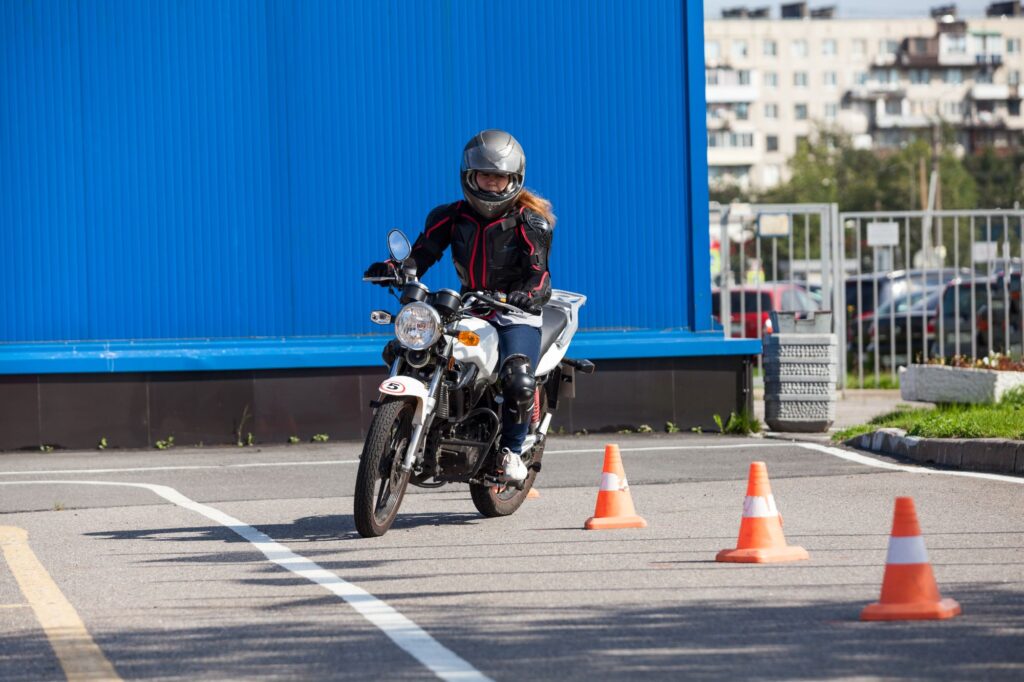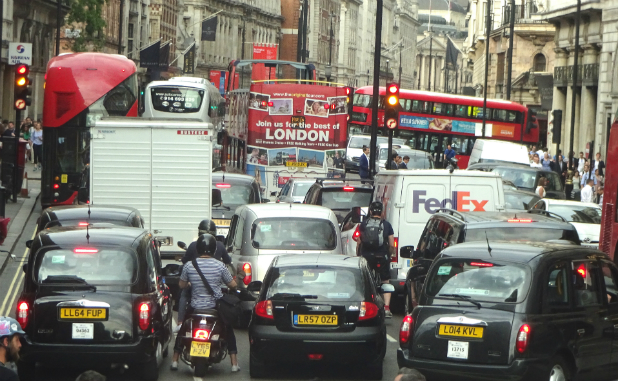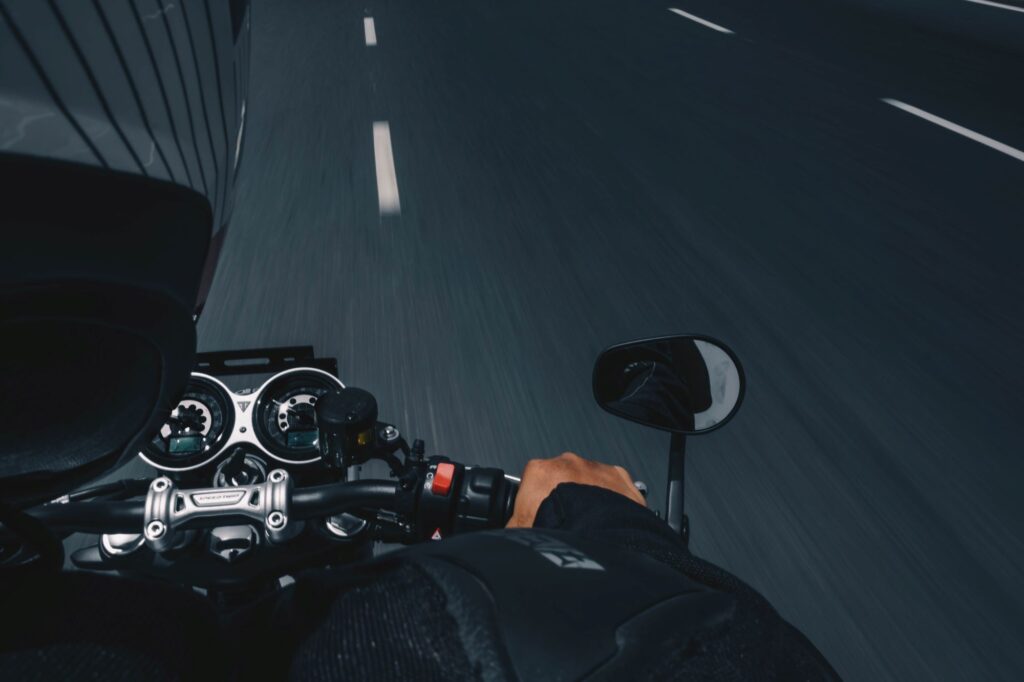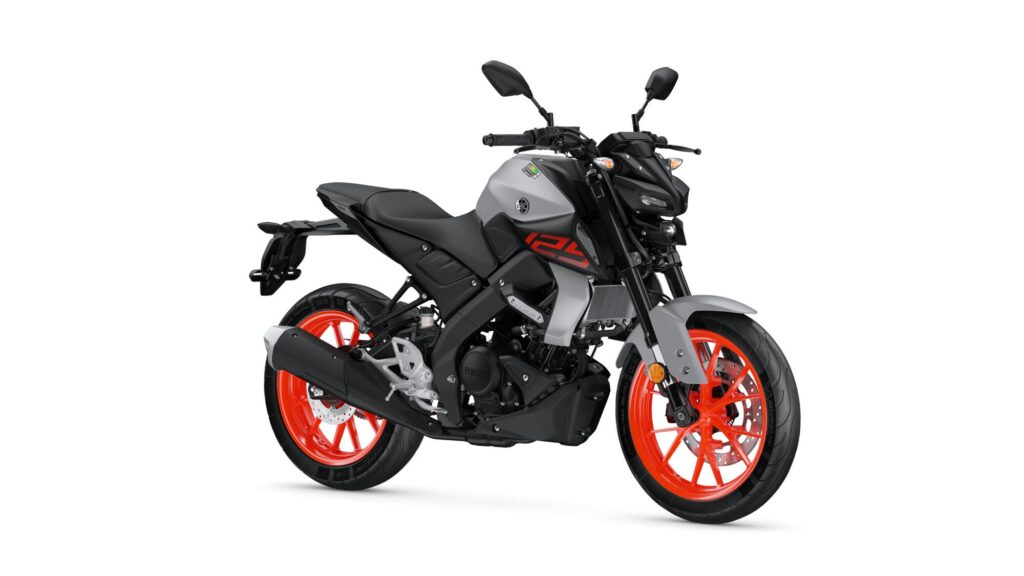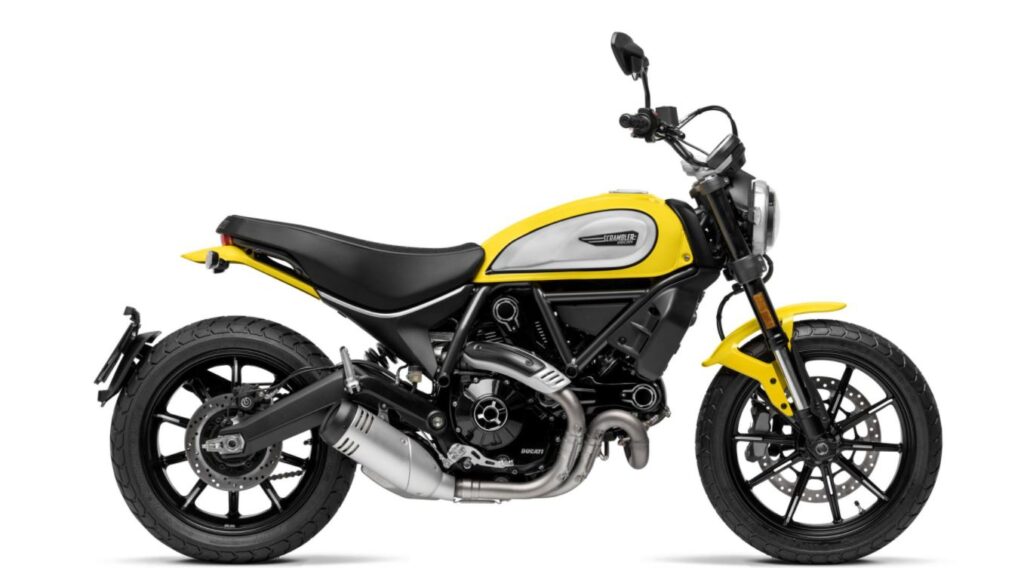
To reduce reliance on fossil fuels, the UK government is moving forwards with a plan to ban the sale of new petrol motorcycles and scooters by 2035, which could make electricity the most common fuel source for motorbikes.
But with the petrol engine being such a core part of the design, sound and feel of motorbikes, how will this change impact the typical design of motorcycles in the future?
To find out, Bikesure and Kardesigns have visualised a concept bike to understand what the typical electric motorcycle of 2035 might look like.
We talked to concept artist Kar Lee about his design, the performance benefits of implementing new technologies, the design trends electric models may adopt and what it will take to convince petrol riders to make the leap to renewable fuel sources.
Aesthetics and design

Should electric models replicate the style of their petrol predecessors, or have their own new and innovative aesthetic?
“I reckon there’s plenty of room in the market for both distinctive, creative design solutions and more conventional aesthetics. Early electric motorbike design used existing motorcycle architecture, and some still do it successfully!
“There’s a fine line between making something look different and work differently. While there’s plenty of room to be innovative in electric bike design, veering too far leftfield can cause issues with cultural acceptance.
“By their very nature, electric motorcycles don’t have noisy, hot exhausts and their powerplants don’t need cooling to anywhere near the same extent, so there is less requirement for radiators or cooling fins. While some manufacturers like Zero and Energica lean towards emulating the traditional look of a petrol motorcycle quite successfully, others go further to accentuate their differences. Do they go too far? For volume sales, perhaps.”
How cyclical are design trends?
“Trends can be driven by outside forces, including legislation or racing. In the late 70s and 80s, two-stroke machines were in abundance, but by the late 80s emissions laws put an end to those large capacity machines.
“Some trends do come back – sports tourers, once prevalent in the 90s and 00s, made way for adventure tourers, though it seems they’re making a mild comeback with the likes of the Kawasaki H2 SX and Suzuki GSX-S 1000GT.
“As for design styles, 90s curves and large body panels have given way to edgier lines and a more minimalist approach. Bikes themselves are smaller and more compact and are both visually and physically lighter.”
What changes are we already starting to see in terms of electric motorbike design within the market currently?
“Today, big sales are coming from the smaller bikes designed for city use, and while the bulk of these aren’t meant to push boundaries in terms of aesthetics, they do utilise a freshness in their design. Removable batteries, built-in immobilisers, regen modes and other features that are more commonplace in the car sector are trickling down.
“In terms of aesthetics, I see electric bikes beginning to look more like traditional ICE machines and, certainly on the more premium machines such as the Damon Hypersport, the batteries themselves are moving away from looking like huge bricks to become more integrated. They instead create more moulded shapes that can use their battery housing as a stressed frame member, thus saving weight. Integrating the battery into the design of a bike is already becoming more seamless and that’s a trend that will continue. Ultimately, the market will decide what it wants and doesn’t want.”
Which industry design trends you expect to see over the next 10-15 years?
“Over the next 10-15 years we can expect electric bikes to become safer, feature more rider aids, go further distances and be more compact as the battery technology evolves. Currently a high-powered ICE bike uses twin discs up front for braking; perhaps this could be reduced to one to save unsprung weight and utilise more regenerative engine braking instead?
“Yamaha have announced they will be using plant-derived cellulose nanofiber (CNF) reinforced resin for their marine products as an initiative toward reducing CO2 emissions and the company’s environmental footprint. Importantly, they’re also considering using this material across their motorcycle products in the future.
“Ducati are pioneering a carbon fibre battery case for the 2023 MotoE race series, for which they are supplying the bikes. We can expect more use of carbon and aluminium in the future due to their light weight and strength.”
Technology
What are the technological barriers to widespread uptake of electric motorcycles?
“Battery development for range improvement and a charging infrastructure are the two most obvious advancements that would benefit the electric motorcycle market. Thanks to the car world, these are making steady progress but we’re still not there yet in the bike sector, which lags by around five years.
“That technological improvement should come a reduction in build cost – a typical EV purchase price is significantly more than its ICE counterpart due to the high costs (in monetary terms as well as ecological and humanitarian) in mining for battery materials like lithium and cobalt.
“With regards to infrastructure, there are, at the time of writing, 21,378 locations with 35,778 charging points across the UK – 35% more than this time last year. In comparison, there are only around 8,500 fuel stations, though there are multiple pumps at any one station and those pumps aren’t being used for hours at a time.”
What progress has been made so far?
“Battery range and rapid charging has improved massively, as has performance, styling and aerodynamics. Damon claims a 200-mile range and 200mph top speed. The carbon-monocoque-framed Arc Vector also boasts a near 200-mile range.
“Two-wheel drive is also an interesting concept that could easily be explored with a motor in each wheel hub.
“The safety side of electric has also made huge strides and is a major focus for some manufacturers including Damon, whose bikes feature HD cameras around the bike to alert the rider of potential hazards using their CoPilot Safety System and a SHIFT adjustable riding position at the push of a button.
“In terms of infrastructure, there are currently four different types of charging port, depending on where your vehicle comes from:
- Type 1 (used in USA)
- Type 2 (used mostly in Europe)
- CHAdeMO (rapid charging used by Japanese cars)
- CCS (European rapid charging).
It’s a mildly confusing hurdle to current EV owners and a modern universal fast-charging solution as a standard would be ideal. The solution may not be far away though – wireless charging and even dynamic and semi-dynamic charging are being trialled by many manufacturers, including Volvo and BMW.”
On which aspects of electric bikes do petrol riders need convincing?
“Probably one of the main challenges to electric bike take-up is educating riders to switch their mindset. Range anxiety will always be a barrier when it comes to electric bikes becoming mainstream, hence why take-up is better in cities where electric motorbikes are perfect for the commute and convenient to recharge at home.
“Motorcyclists, overall, enjoy being seen and heard. To many riders it’s an important safety aspect for other road users to be aware of their presence when they blip the throttle. Filtering through traffic on a quiet electric bike is a potentially dangerous experience – pedestrians walking out can’t hear you and cars switching lanes don’t either.
“To most riders, the sound of a throbbing engine is also a major part of motorcycling’s joy. Harley Davidson thinks so too. Their Livewire has a “Haptic Pulse” feature at idle to remind you that it’s switched on. Perhaps motorcycle manufacturers will add engine sounds, much like how you can change your ringtone.”
How could motorcycle manufacturers could make electric motorbikes more appealing?
“If manufacturers are looking for mass appeal, they should make electric motorcycles look like traditional ones! The issue with so many current electric motorbikes is that they try to reinvent themselves too much.
“While there is a market for these unique, standout machines, the electric bikes that get the most positive public reaction are generally the ones that put a mildly futuristic spin on an existing ICE design. The Triumph TE-1, Damon Hyperfighter / Hypersport and Ducati MotoE are great examples of this – squint and they could easily pass as petrol-powered.”
Key differences between electric bikes in 2022 and the 2035 concept model
| 2035 concept model key feature | Difference from 2022 models |
| Lighter | Weight reduction is a key target for improving efficiency. Strong and light materials, such as carbon fibre, magnesium, and alloy will be used more frequently. The battery case itself becoming a structural component saves the additional weight of a full, separate frame. |
| New materials | Yamaha are developing plant-derived cellulose nanofiber (CNF) reinforced resin for marine products as an initiative toward reducing CO2 emissions. |
| Increased range | Solid state batteries are less hazardous compared to conventional lithium-ion batteries as they hold no liquid and do not swell or catch fire. They can also hold more charge than lithium ion for the same weight as they have more energy density. |
| Faster, more convenient charging | Today there are four types of charging points: Type 1 or Type 2 for slow and fast charging, and CHAdeMO or CCS for rapid charging. Bikes in 2035 would support rapid charging or newer, even faster systems that would also offer wireless charging – a system currently being trialled. |
About Kardesigns

Specialising in motorcycle concept artistry, Kar Lee is a visualiser and motorcycle journalist whose work has been published in motorcycle magazines around the world.
Get an electric bike insurance quote
When you switch to electric, make sure you get the best protection with a bespoke insurance from Bikesure, the specialist electric scooter and motorcycle insurance broker. To get a quote call 0333 270 8235 or book a callback at a time that suits you.

